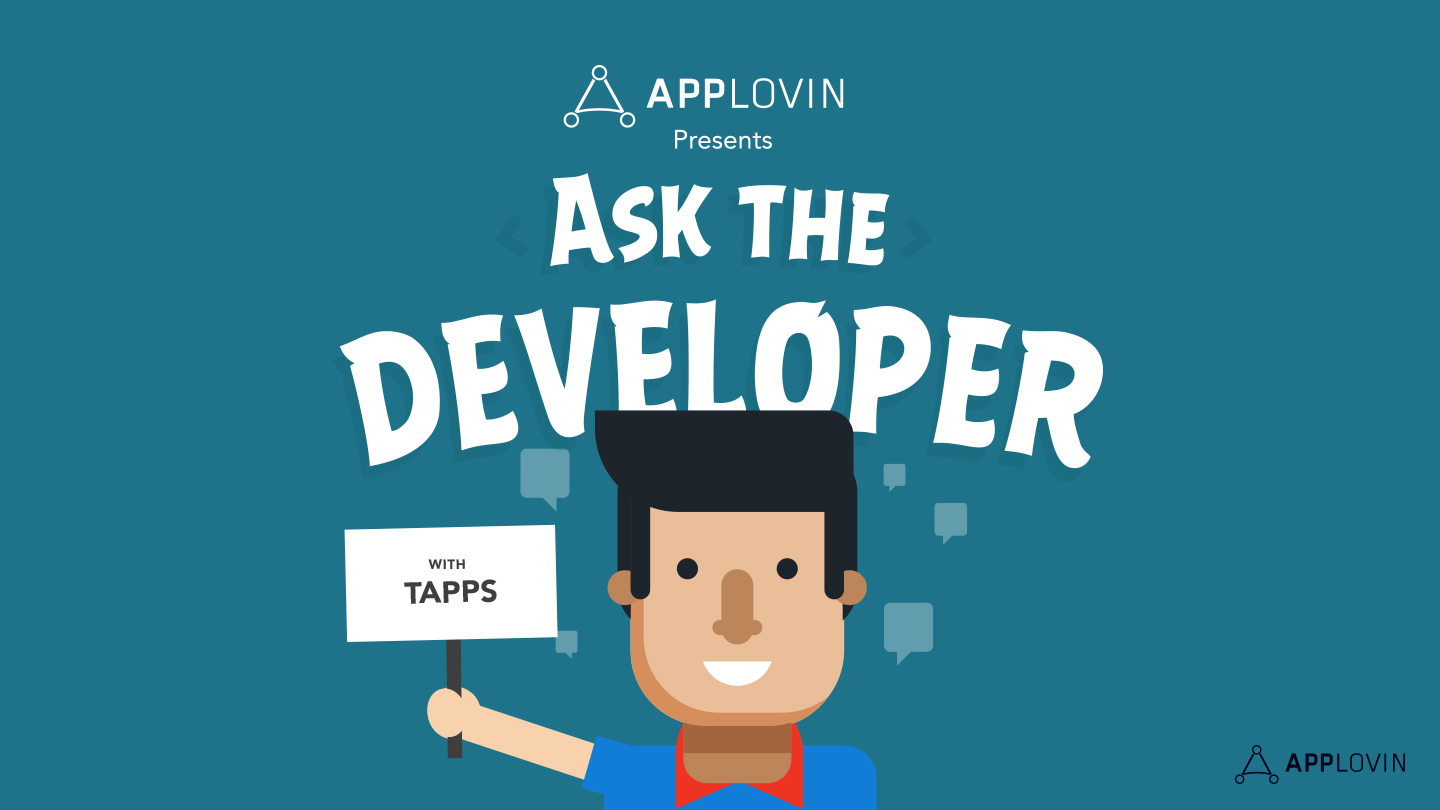Gaming, Monetization, User Acquisition
Ask the Developer: How Tapps Games built its portfolio of over 250 games
May 30, 2018

Gaming, Monetization, User Acquisition

For this installment, we got to speak with members of the Tapps Games team including Co-founder Flávio Miyamaru, VR Head of Product Marcelo Marcati, and CMO Felipe Hayashida about what it’s like being a mobile game developer in Brazil and how they found success. The company started in 2012 and has since blossomed into a 120-plus person team that has created a portfolio of over 250 games. Based in Sao Paulo, Brazil, Tapps is focused on its mission statement: Creating fun for everyone. Here’s how they do it.
What is your most popular game and why do you think it’s so successful?
FH: Our biggest title is currently Bid Wars (Android | iOS), but we have some other titles that are equally popular, such as Vlogger Go Viral, MyBoo, Toilet Time, and We Are Illuminati. For our games, the recurring factor of success is very deep user engagement, mainly driven by a user-oriented fun factor and design style that fits a specific audience.
Toilet Time is a hilarious game. Where did the idea of this come from and how important is humor in your games?
FM: The idea behind Toilet Time was a basic UX effort to understand more about our users. When smartphones started becoming popular, we realized that many people go to the toilet with their phones, so we thought, “Why not use this idea to make a game about it?”
Humor is one way we make games fun. It’s not necessarily the easiest path to take, given that there are deep cultural considerations to be made, especially when building for global markets. We need to think of the concept for each game to make it fun in order to entertain and engage players.
What makes Brazil a unique mobile gaming market?
FH: The Brazilian mobile gaming market is growing at a fast pace. Brazil has the highest number of smartphones in Latin America with over 138 million Brazilians owning a smartphone connected to the internet and 198 million total smartphones in use. It’s a market with high potential in volume.
That being said, the monetization aspect is very challenging, as most people tend not to spend directly on mobile gaming and the potential for mobile ads is still untapped by most advertisers. This has improved over the years but it’s still far from the levels we see in more mature markets.
What are the unique challenges of being a mobile game developer in Brazil?
FH: The main challenge is the lack of a structured gaming market. Although we have highly qualified professionals in the country, finding expertise, specifically on mobile gaming, is very challenging and takes some creativity to solve.
Another challenge is overseas operations and high taxes, especially given that most of our partners are located in the US and Europe.
How do you localize your games? How do you ensure your games fit culturally before expanding into that market?
FH: Most of our localization work consists of translation of both our store and our in-app content. English and Portuguese content are translated in-house, but we ask partners to translate content in other languages. Most of our games are targeted toward broader audiences from different demographics instead of specific countries. Larger localization efforts are only done in very specific scenarios.
I see you guys are experimenting with VR games. What has your experience with VR as a mobile gaming platform been like? Do you think VR or AR will the next mobile gaming platform?
MM: We’ve developed five VR games last year for the Samsung Gear VR. One of them was ported over to Google Daydream and Pico Goblin, and another one to PC (Oculus Rift and HTC Vive). Developing for mobile VR has its technical and design challenges, like ensuring 60 FPS on a not-so-powerful device and designing for usability in 3DoF devices. But these are surmountable obstacles, and it is possible to create engaging and immersive experiences for these platforms. The main problem with the VR market right now, mobile or otherwise, is the very limited install base, which makes breaking even a big challenge, even with small budgets.
We are planning on developing for the new generation of mobile VR devices, but we’re not counting on the revenue generated by it. We see a lot of promise for the future of the mobile VR market, especially with advancements in hardware, but it will take a little longer for it to be a truly profitable market.
I personally don’t believe VR will be “the next mobile gaming platform” as in the next main form of mobile gaming. I think it will be a new way to consume media alongside more “traditional” ways. AR, on the other hand, might indeed substitute the traditional gaming platform, but I feel it will take longer to mature since it has harder technical problems to solve.
Thank you for your time!
If you would like to be featured in our Ask the Developer series, please email [email protected] or ask your account representative.